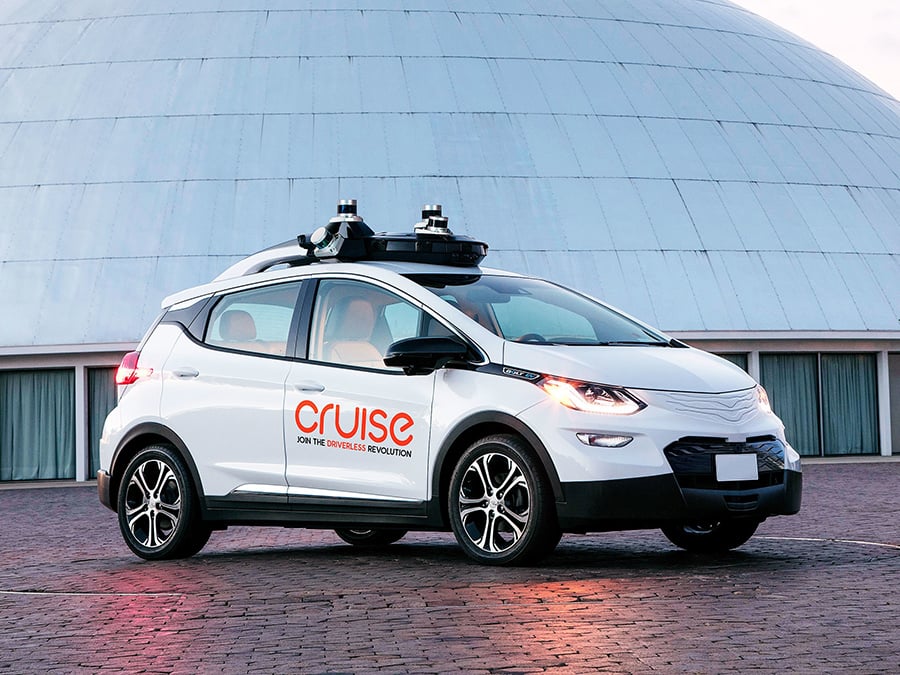
January 11, 2018
CES 2018: Autonomous Vehicles Aren’t Here Yet, But Their Development Is Already Reshaping Cities
While fully driverless vehicles still face major hurdles, car companies are realizing technologies now that could quickly inform urban planning and transit.

Metropolis magazine is reporting from CES in Las Vegas from January 8 to 10—catch our latest coverage of smart cities, 3D printing, VR, and more, here.
The vision of fully autonomous vehicles (AVs) looms large among the public and urban planners alike. When all vehicles are fully driverless, the thinking goes, then we’ll be able to redesign our streetscapes, reclaim the parking garages that dot downtowns, and solve “last mile” challenges of mass transit. However, as one panel at CES showed, that vision is a long ways away.
“The experiments on how autonomous vehicles may enable significantly redesigning and reimagining the city—we haven’t gotten to that stage yet,” says Michael Ableson, VP global strategy at General Motors. Car manufacturers are still only iterating solutions the fundamental safety and logistical challenges of AVs. However, that doesn’t mean cities won’t start benefiting from increasingly “smarter” cars in the near future.
In the shorter term, these semi-autonomous vehicles can provide a wealth of information to municipalities. “City planners have the problem of investing in infrastructure, which is not always an easy…decision to make,” says Erez Dagan, senior VP of advanced development and strategy at Mobileye, an autonomous vehicle sensor developer. “It’s very hard to see when that money pays back in terms of mobility efficiencies.” But real AVs can provide a wealth of data to help identify and evaluate transportation infrastructure investment opportunities: “[A]utonomous vehicles, once they’re on the road, should be viewed as a sensor…traveling and serving that mobility efficiency objective with a lot of road data, and without that hard-to-do down payment of infrastructure investment.” (This was a major topic of discussion at another panel, where one panelist remarked “data is the new oil.”)
Slightly farther down the line, we’re much more likely to see fleets of autonomous shuttles. “The mobility as a service applications are easier to happen sooner because you can amortize the high cost of some of the sensing technologies,” says Dr. James Kuffner, the chief technology officer at the Toyota Research Institute. Furthermore, it’s easier for technicians to maintain the fleet’s sensors, and the shuttles themselves can be easily confined to certain areas—a potential plus if conditions elsewhere are challenging to navigate. Then there are still a wide range of factors that companies need to overcome to supply fully autonomous vehicles: passing legal hurdles, creating AV cyber security systems, lowering the cost of the technology, and finding ways to have older, “dumb” cars peacefully coexist with AVs.
Even then, the horizon isn’t cloud-free. While the panel was confident cities would see the health and safety benefits of AVs, “cities, in the near term, could be potentially losing revenue: less parking revenue, [fewer] parking tickets, [fewer] gas taxes as the fleet goes electric,” says Ableson. “So it will take a conversation, not so much with [car manufacturers], but more in the public sphere.” Once new legal and financial templates are established, the panelists were hopeful they would spread to other cities. “The future is very bright,” says Ableson, “but it’s gonna take a lot a work.”
You can find our latest coverage of CES 2018 here.
Recent Viewpoints
Viewpoints
Sustainability News Updates for Q2 2025





